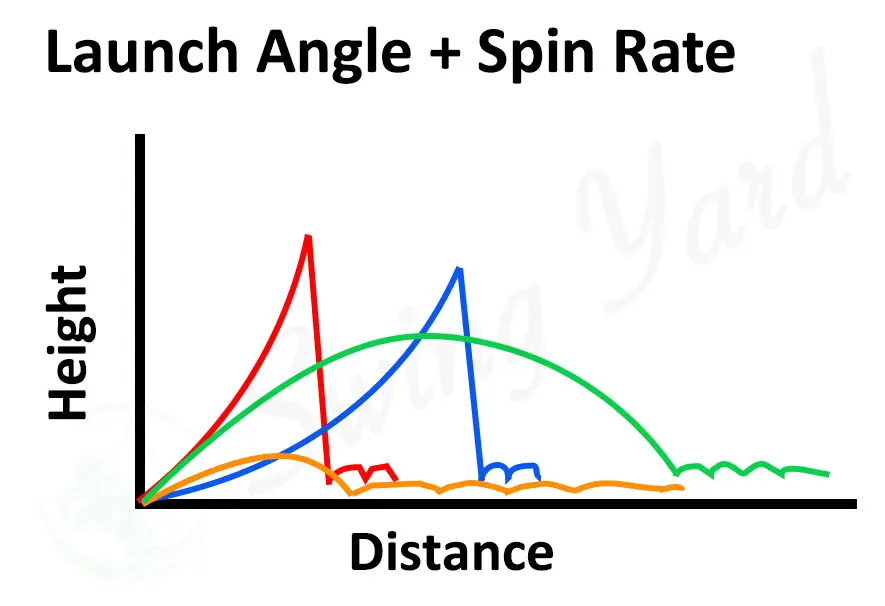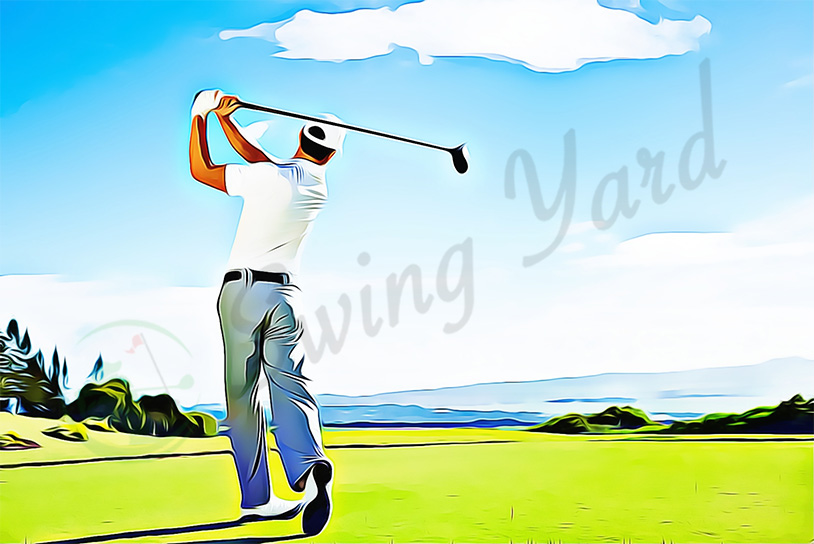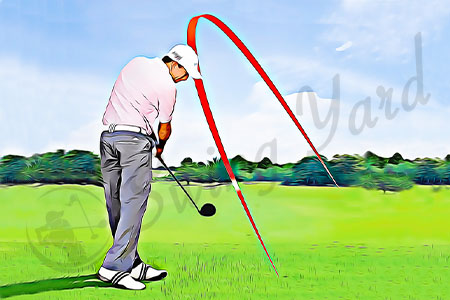What’s the Standard Driver Shaft Length for My Height?

By Coach Erik Schjolberg – Jan 2, 2024
Contents
Key Takeaways
- Your height isn’t the only factor to consider
- Wrist to floor measurement should determine driver shaft length
- Standard driver shaft length is 45”
- Shorter = straighter
- Longer is further… but not as much as you think
- High handicaps should avoid longer driver shafts
In the past most driver shaft lengths were around 43 inches up until the 1990s, where they started to get longer. You could even find custom made drivers that had shafts as long as 48 inches (the legal limit at the time per USGA rules of golf).
However, this length has been shortened to a maximum of 46 inches starting in 2022.
What is MY Ideal Driver Shaft Length?
How the Ideal Length is Determined
The ideal shaft length for each player will depend on factors such as height, age, swing-speed, and ball speed.
If you’re a short player trying to swing a long-shafted driver, in order to control it and the ball flight, you’ll need to have a higher ball speed.
If you have, for instance, only a 100 mph swing, and you decide to lengthen your driver shaft, then you may not have enough ball speed to control it.
The best way to find out which driver lengths fits you best is to experiment with several different lengths of shafts and stiffnesses of shafts.
Remember just because your golfing buddy swings a long shafted stiff flexed driver, doesn’t mean you can. Play your own game and swing your own swing.
Standard Driver Shaft Length (off the rack)
- For men, the standard driver length is 45 inches right off the shelf
- For women, the standard womens driver length is 44 inches
(check out our test for finding the best women’s golf driver)
Driver Shaft Length Chart
There’s a few charts here you should look at, perhaps the first one is the most important…
Chart Comparing Driver Shaft Length, Average Distance, and Average Dispersion
Golfer Handicap Group
| Driver Length
| Average Distance
| Average Misdirection
|
| 24 to 36 | 45 44 43 | 206.4 207.0 207.3 | +/- 25.3 +/- 21.3 +/- 16.7 |
| 18 to 23 | 45 44 43 | 214.2 214.8 215.7 | +/- 26.4 +/- 22.7 +/- 17.0 |
| 12 to 17 | 45 44 43 | 221.3 222.5 222.8 | +/- 23.5 +/- 18.1 +/- 15.1 |
| 6 to 11 | 45 44 43 | 227.1 228.1 228.4 | +/- 18.2 +/- 15.6 +/- 11.8 |
| 0 to 5 | 45 44 43 | 238.7 238.3 237.5 | +/- 15.7 +/- 12.2 +/- 9.7 |
This is actual test data conducted by Tom Wishon a couple years ago. The main takeaway here is that, regardless of handicap, longer or shorter driver shafts didn’t actually increase or decrease the average drive distance by more than 1 yard on average.
BUT, the dispersion was MUCH tighter with a shorter driver.
Let that sink in for a minute!
Driver Shaft Length Chart for Your Height
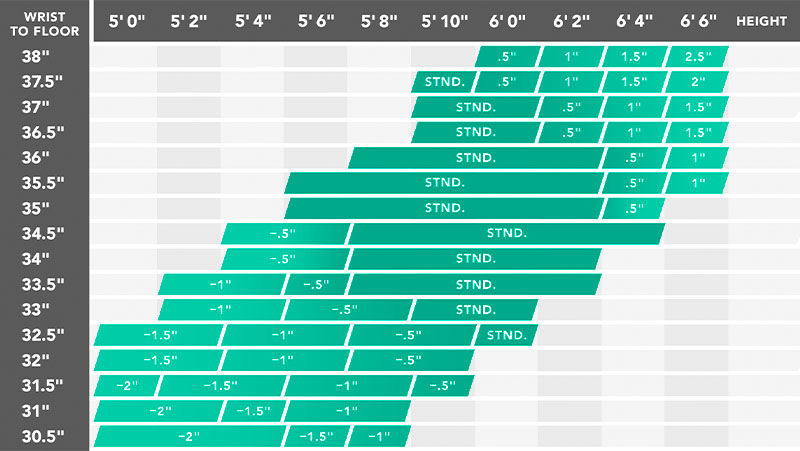

This driver shaft length chart looks fancier than the last, and yes, you should aim for a driver length that matches up with your height and ‘wrist to floor’ distance as shown above… BUT, take it with a grain of salt.
(by the way, “STND.” in the chart means 45 inches)
Use this as a starting guide, and go from there. I recommend going a little shorter if you need help with some accuracy / dispersion tightening. Like I said, the first chart above tells you all you really need to know.
For the Beginners and High Handicappers
Honestly, you should stick to something shorter if you’re a golfer in this category. And be honest with yourself on your abilities if you actually want to find the best driver for beginners and high handicappers.
Driver Shaft Length Basics
Accuracy vs Distance
Does the difference in shaft length have a bearing on distance and accuracy?
The answer is… it depends.
For some players, it can make it harder to square the club at impact with a longer length shaft, reducing accuracy.
The longer the shaft, the more energy it takes to keep the body and club in sync. This is the downfall of longer shaft length clubs.
Does it add more distance? In theory, yes it adds clubhead speed… which adds distance. Testing has revealed that for each inch, a player can increase their yardages by 5 to 10 yards or more.
But one thing to remember, adding yardages could very well mean a loss in accuracy for the majority of golfers, and could be a reason why you slice your driver. Choose wisely on this aspect.
Short Driver Shaft
The main concept of using a short driver is to gain accuracy.
If you constantly find yourself hitting from the rough or behind trees, and you’re using a 45 or 46 inch shaft, then maybe it’s time to shorten the length.
However there is a drawback to cutting down the length of the shaft… it changes the stiffness of the shaft itself, making it stiffer. More on that later.
Shorter drivers, while increasing accuracy, lose in distance and will take much more effort in the swing to maintain the same distance as the longer shafted clubs.
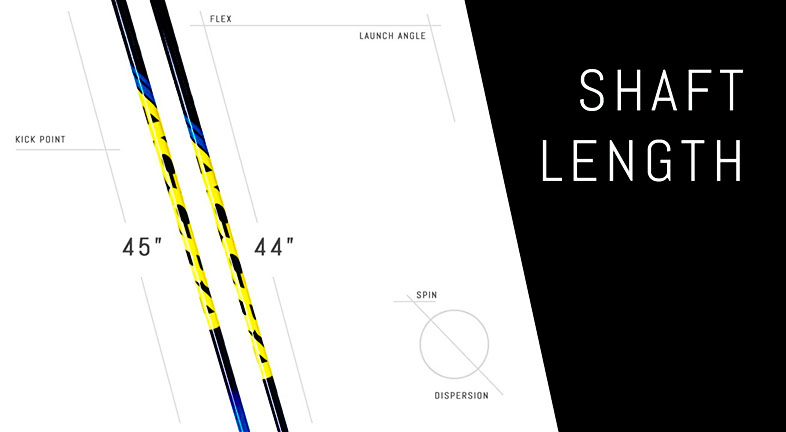

Long Driver Shaft
Longer shaft clubs are just the opposite. They take more effort to swing the club and stay in sync/tempo.
Longer shafted drivers can produce those bombs more effectively due to faster clubhead speeds and can add 10 or more yards to each of your drives.
Now here are the drawbacks…
Less accuracy. The longer the shaft, the more effort it takes to get the clubhead through the swing and keep your tempo, thus causing players to raise up sooner than normal, lose the proper swing plane, and ultimately causes the ball to hook, or more commonly, slice off into trouble.
How To Measure Driver Shaft Length
Here’s how to measure driver shaft length:
- Get a tape measure or a yardstick
- Place your driver horizontally on a flat surface for optimal precision. Never measure your clubs upright because you can’t measure accurately from the middle of the sole
- Measure from the clubhead’s heel to the butt-end of the shaft
- Mark the point on your yardstick or measuring tape, and check to see if it fits the recommended size for your height and swing
After measuring your driver length, refer to our chart on shaft length vs height to determine if your current setup is suitable.
Making a Shorter Driver Shaft – Cutting It Down
Differences After Cutting Down a Driver Shaft
Whether you add length or cut length, some changes automatically occur within the shaft.
The main two are flex and swing weight.
When you shorten your shafts, you’ll lose swing speed and gain stiffness. Typically, the shorter the shaft, the slower the clubhead speed and the stiffer the shaft becomes.
Pros/Cons
Probably the best part of cutting down a shaft is the ability to gain accuracy.
However, this comes at the price of losing swing speed and distance. Remember, if adding length means adding 5 to 10 yards per inch, the opposite can be said about cutting the length of the shaft down.
So, you have to ask yourself, “How wild am I? Am I so wild that with each tee shot I’m in trouble, or not?” This question will determine whether to cut or not to cut.
How To Shorten a Driver Shaft
- Remove the grip using a sharp knife or box cutter, remove the grip tape as well
- Using a ruler, measure the amount you want cut off and mark it with a sharpie
- Wrap the shaft at the mark with clear masking tape (to keep it from fraying)
- Use a ¼” to 1⅛“ tubing cutter to cut the shaft at the mark
- Sand the rough edges and re grip the club
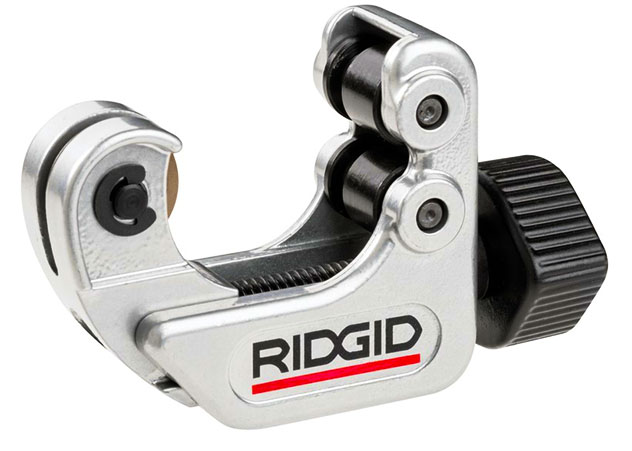

Here’s a video if you want to watch someone do it first, it’s pretty easy though. I will add this, he says not to use a tubing cutter on a graphite shaft, but I’ve done it several times and never had a problem, especially if you tape it with a few layers prior to cutting.
Final Thoughts – What Length Driver Do I Need?
So what length driver do i need? The short answer is probably a shorter one!
In this article, we talked about golf driver shafts, the average driver length and legal limit, and how they, versus a shorter driver shaft, affect accuracy and ball flight.
While shorter shafts can gain accuracy, they lose in distance and swing speeds. We’ve talked about how to shorten or lengthen drivers and what takes place when we do this.
While you have driver length on the mind, you may as well check your putter length by height is correct at the same time.
Reviews of the Best Golf Drivers
If you’re in the market for a new driver and you haven’t really decided which one you’re getting yet, you’re probably not ready to worry about shaft length just yet.
Check out our extensive review of the top rated golf drivers before you pull the trigger, you might be a little surprised at the results.
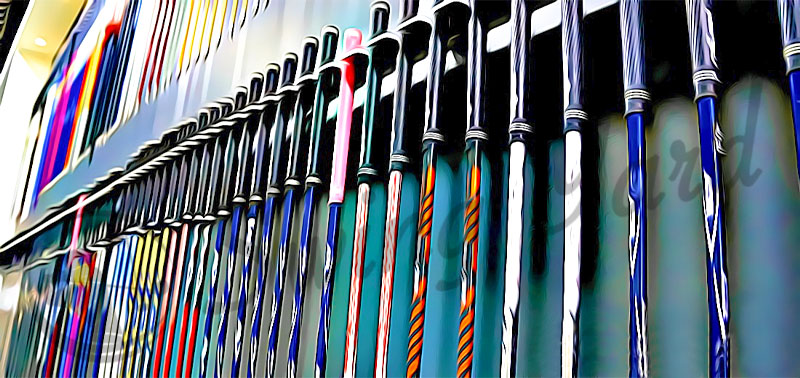

FAQ
Note – Some of these FAQs were covered throughout the article, but I still get these questions a lot… so here are the “short and sweet” answers to the most common questions:
How much should I shorten my driver?
You should shorten your driver an inch or two if you feel that you can’t control the ball off the tee. If you’re wild with the driver and end up in all kinds of trouble consistently, then a shorter driver shaft could definitely help you hit more fairways.
Can I shorten my driver shaft myself?
You can definitely shorten your driver shaft yourself. Just be careful or you’ll end up having to buy a brand new one. Use a pipe cutter and take you’re time.
There is not a fine art to cutting down driver shaft, but there is the aspect of cutting too much and getting stuck with either finding an extender to fit correctly, or buying a new shaft.
Is a shorter driver more forgiving?
A shorter driver isn’t more forgiving per se, BUT it does allow you to have more control swinging the club, and therefore more of a chance to hit the sweet spot consistently. Check this out if you’re in the market for the most forgiving golf driver.
Do pros use shorter drivers?
Yes, some pros use shorter drivers. At one time, Rickie Fowler used a 43.5 inch driver while Jimmie Walker used a 42.5 inch driver. Many on the pro circuits use a 44 or 44.5 inch driver.
Can I put a 3 wood shaft in my driver?
You can put a 3 wood shaft in your driver, but it is not wise to do so. Most 3 wood shafts are only 43.5 inches maximum in length. Unless you want a driver shaft this short, it’s not a good idea.
Another reason is that the tip of the two clubs needs to be the same diameter size. Most woods are either .335 or .355 in diameter at the tip while iron shafts are .370.
Will a shorter driver help my slice?
Yes, a shorter driver will help your slice. The closer you are to the ball, the easier it is to control your accuracy. Imagine trying to hit the ball with a driver that is 8 ft long, it would be almost impossible! Also, a shorter driver will make it easier to square the clubface at impact, helping with your slice.
If you’re a bad slicer though, there are other factors at play, and you may want to simply get a driver specifically designed to eliminate the slice like an offset driver.
Is My Driver Too Long?
Your driver is too long if you’re having trouble making good solid contact with the ball and/or you’re not able to square the clubface at impact. Most drivers are actually too long “off the rack” and should be an inch or two shorter.
What Is The Legal Driver Length?
The most current legal driver length is 46 inches long, which was a new rule as of January 2022 for PGA Tour players, with local clubs having the option to enforce the rule (but who’s actually going to check, it’s really up to you).


